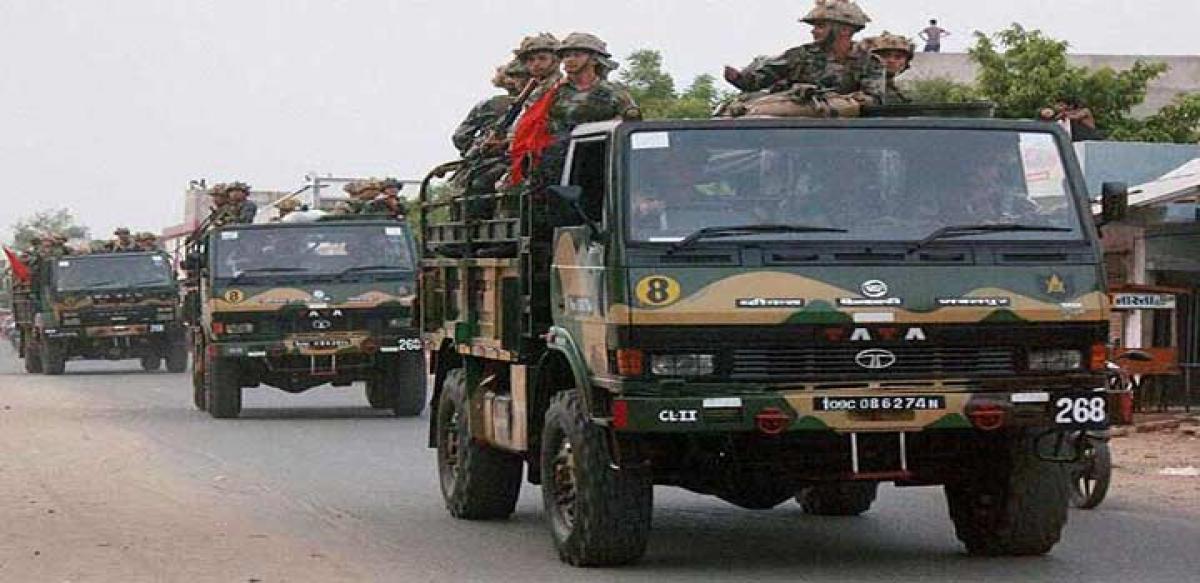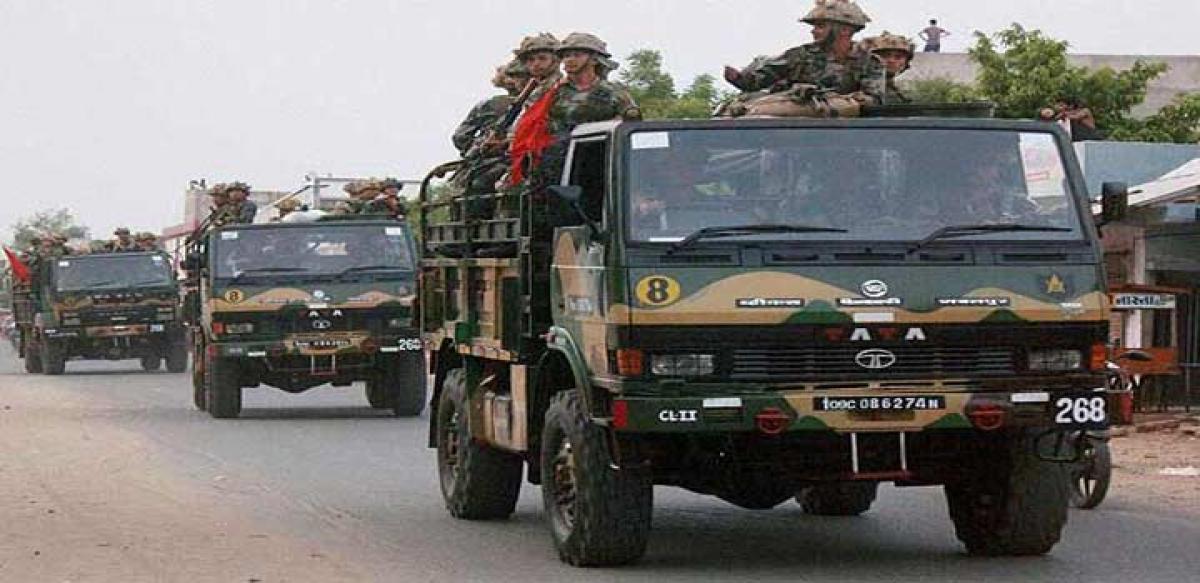Live
- Five-Year-Old Boy Dies After 55-Hour Rescue from Borewell in Rajasthan's Dausa
- Chaos in Parliament over Congress-George Soros link claims, BJP MP poses questions
- Bus Driver Arrested After Deadly Accident in Mumbai’s Kurla; 42 Injured
- Rs 36.07 crore tribal products sold through TRIFED in FY24: Govt
- PM Modi to lay foundation stone for Ken-Betwa river linking project on Dec 25: MP CM
- 70 farmers trained as drone pilots in Anantapur dist
- AP Pensions: 500 Ineligible People Receive Pensions for Every 10,000
- South Korea's ruling party chief voices support for President Yoon's impeachment
- Defeat in Tirhut bypolls doesn't signify discontent among teachers: Bihar Education Minister
- Over 1 lakh micro food processing enterprises get assistance under PMFME scheme: Minister
Just In

Sikkim shows solution to reservation row. The recent riots in parts of Gujarat have taken most of the elite in the State and the country by surprise. These events need a thorough examination.
Army has to be called in to quell violence by the Patel community demanding OBC quota in Gujarat
The recent riots in parts of Gujarat have taken most of the elite in the State and the country by surprise. These events need a thorough examination. Could we have foreseen them? Hardik Patel's fiery persona has triggered a mass movement of Patidars (or Patels) coming forward to claim something they believe to be their right. They want to be included into the other backward class (OBC) fold like the Yadavs of Bihar and Uttar Pradesh.

While Gujarat slowly returns to normal, social and political scientists will seek many explanations. In this backdrop, let me present what Sikkim has done over the years. Sikkim is known as the most peaceful state in northeastern India and perhaps within India as well. However, communal fault lines are embedded in Sikkim's society as well.
So how has this communal harmony been sustained even though we have a rather curious history of a Himalayan kingdom becoming the 22nd state of India? Two decades ago, after the Mandal Commission's recommendations, Sikkim was facing a social challenge similar to what Gujarat is now facing. Of course, there was no such massive mobilisation, but the context is comparable.
The newly-elected Pawan Chamling-led Sikkim Democratic Front had pre-empted reactions from traditional upper castes and manoeuvred the delicate social balance through what may be called universal affirmative action - something worth examining today. The first SDF government, immediately after coming to power in 1994, recommended to the union government to include seven communities - the Sikkimese of Nepali ethnicity - as socially and educationally backward classes (OBCs).
This was a historic step that commissioned affirmative action for the weaker sections of the population. Consequently, the Bhujel, Gurung, Limbu, Magar, Rai, Sunuwar and Tamang communities were declared OBCs on June 2, 1994. This empowered these communities, except for the 'creamy layer', by making them eligible for reservation within Sikkim and India in higher education and government services.
However, similar to the Patidars led by Hardik Patel in Gujarat, a feeling of reverse discrimination began to beset within the Newar, Bahun and Chettri communities in Sikkim, generally considered forward and economically advanced. In December 2002, Limbus and Tamangs were accorded the status of the scheduled tribes in Sikkim and West Bengal.
Following this, the Sikkim government declared the Bhujel, Dewan, Gurung, Jogi, Kirat Rai, Magar, Sunuwar, and Thami communities as most backward classes (MBCs). Similar steps to categorise original OBCs as MBCs were taken by the governments of Uttar Pradesh and Bihar around the same time. This created space for recognising that even within the Newar, Bahun and Chettri communities, there were disadvantaged and poorer sections.
The Sikkim government, under Chamling, proactively recognised these communities as OBCs within the state, though they continue to be in the general category as far as the Centre is concerned. This move fulfilled Chamling's promise made in 1996 that all Sikkimese of Nepali origin will be accorded OBC benefits.
This is just one example of how Sikkim's inclusive framework and social engineering have helped maintain communal harmony within the Sikkimese social fabric, an all-important aspect of governance especially in a geo-strategic state that shares borders with three countries. Politicians and leaders must remain sensitive to issues related to inclusion and exclusion of sections of society into reserved categories, which is also affirmative action.
With increasing education and awareness, reactions can build up and this can and may take a violent form if not addressed with care and concern in time. But, in the rough and tumble of politics, we might just be brushing under the carpet time bombs that need to be defused. Avoid taking steps in time, and we might end up with outbursts of anger by the not included masses who feel a sense of injustice as has happened in Gujarat. Re-examination of these possibilities is both wise and politically sensible.
The steps taken by Chamling, who has been in office for well over 21 years in Sikkim, are fine examples of being politically astute and sensitive. He has articulated the next steps in the form of making Sikkim a fully tribal state but this is something which Parliament has to decide. Hence, what could be done in the state has been done proactively. The ball is now, for the future of communal harmony, in the court of the central government.
By P D Rai
| Stay updated on the go with The Hans India News App. Click the icons to download it for your device. |

© 2024 Hyderabad Media House Limited/The Hans India. All rights reserved. Powered by hocalwire.com







